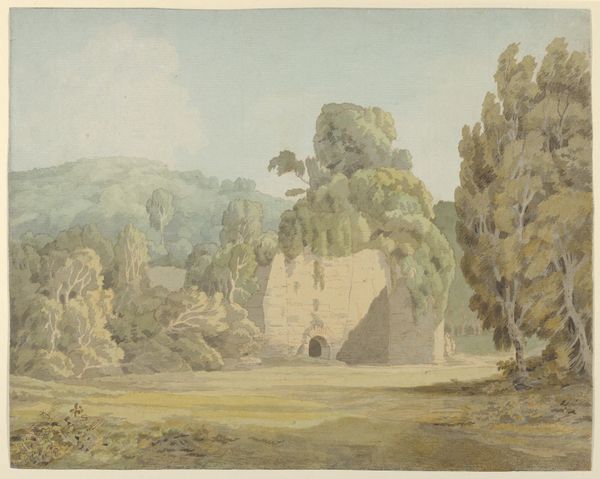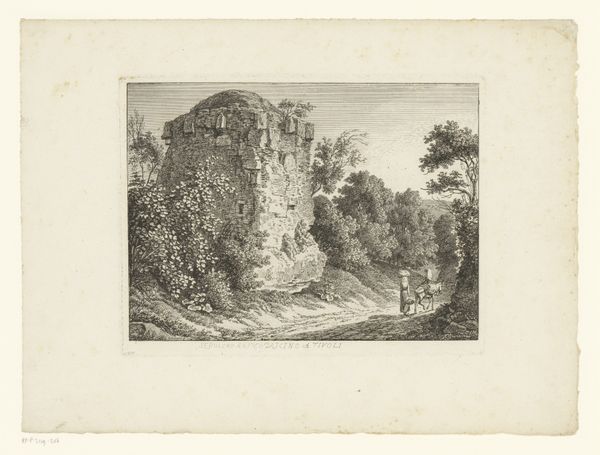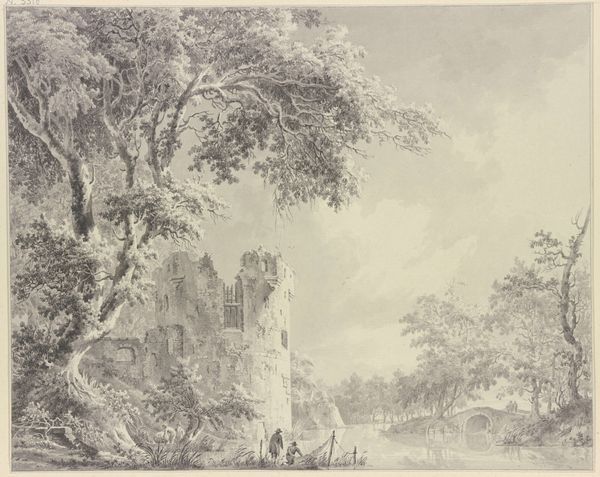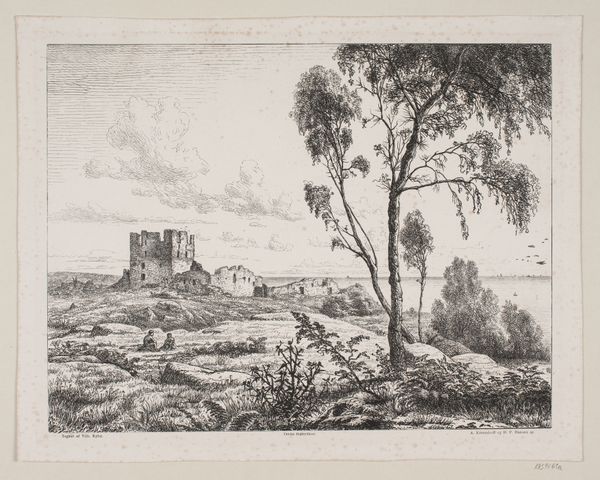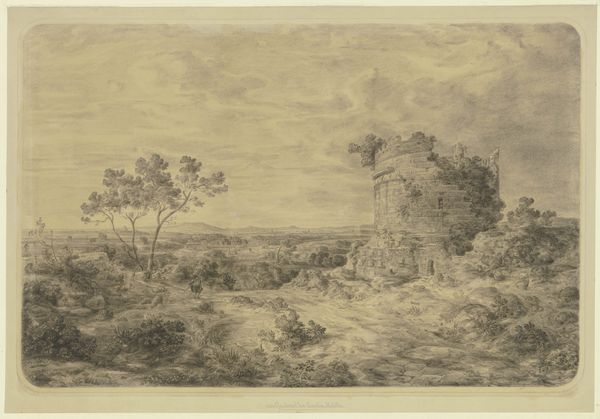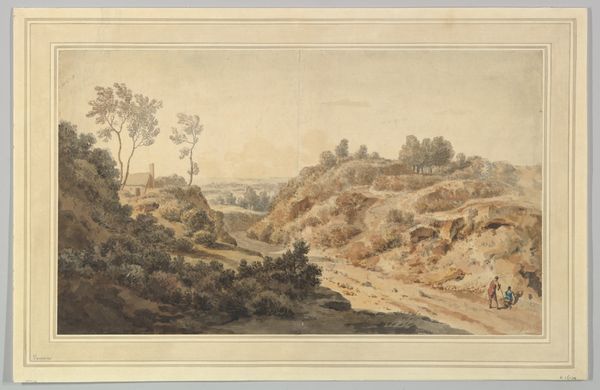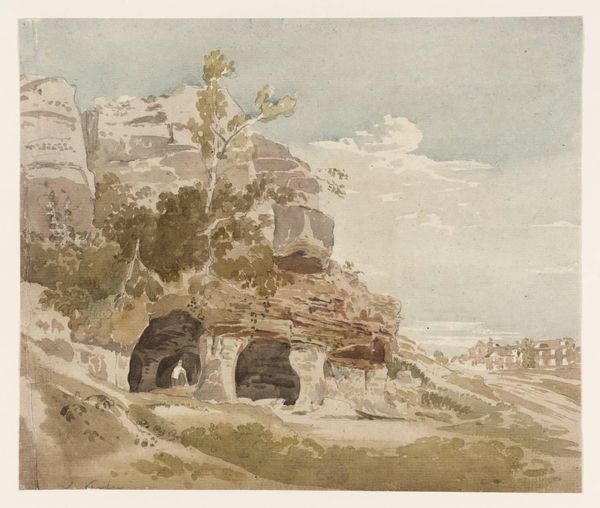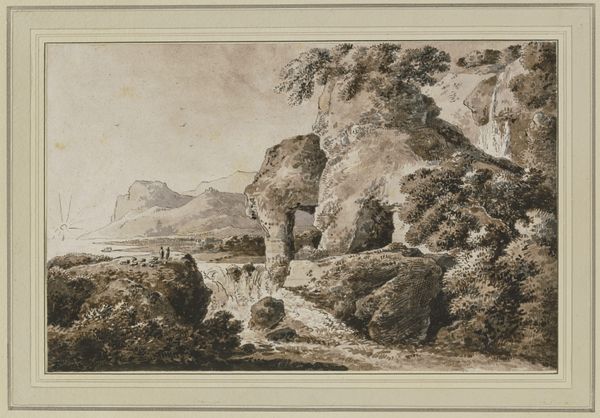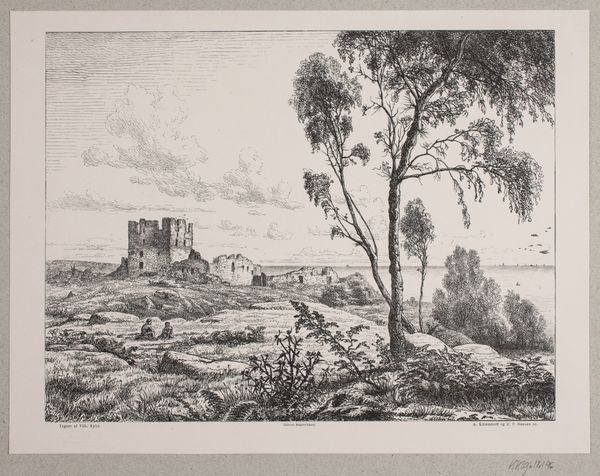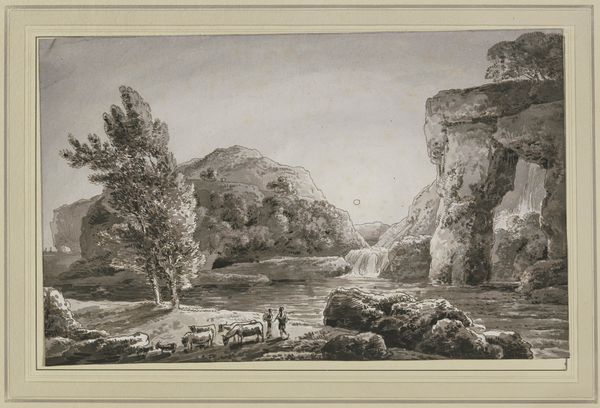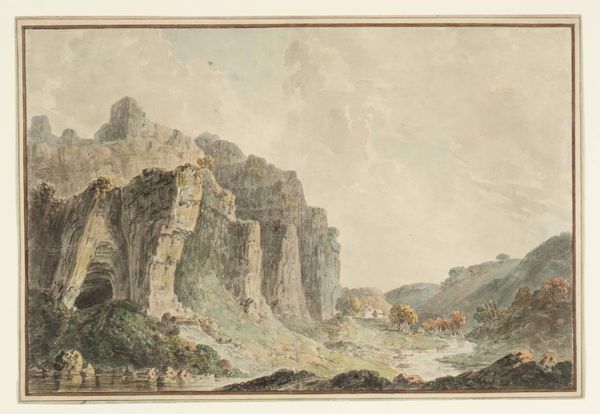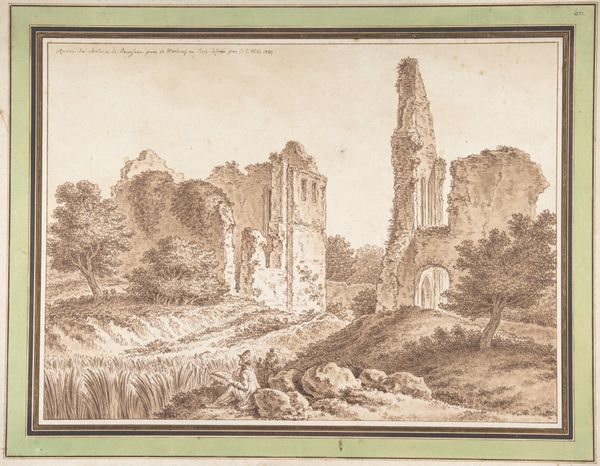
Berry Pomeroy Castle in the County of Devon 1775 - 1805
0:00
0:00
drawing, watercolor
#
drawing
#
landscape
#
watercolor
#
romanticism
Dimensions: Sheet: 12 1/16 × 18 7/8 in. (30.7 × 48 cm) Mount: 13 7/8 × 20 11/16 in. (35.2 × 52.6 cm)
Copyright: Public Domain
Francis Towne created this watercolor of Berry Pomeroy Castle in Devon, England, sometime in the late 18th or early 19th century. It presents the castle not as a site of military might or aristocratic splendor, but as a picturesque ruin, overgrown with vegetation. The image speaks to the cultural fascination with ruins during the Romantic era, particularly those evoking a medieval past. Artists like Towne found aesthetic value in decay, hinting at the transience of human achievement. Was this simply an artistic trend? Or can we see in it a critique of contemporary society, the rapid industrialization and urbanization that threatened traditional ways of life? Historical research into the social and economic conditions of Towne’s England, the changing status of the aristocracy, and the rise of landscape painting can help us better understand the complex meanings embedded in this seemingly simple watercolor.
Comments
No comments
Be the first to comment and join the conversation on the ultimate creative platform.
